BASIC GEOMETRICAL IDEAS for Class 6 MATHS
INTRODUCTION
Baccho, geometry is one of the earliest mathematical concepts. Geometry word ek greek word "Geometron" se derive hua hai, jisme "Geo" ka mtlb hota hai Earth and "metron" ka mtlb hota hai measurements. Geometry sirf aapki maths ki book m hi nahi balki almost har cheez m hoti hai agar aap observe kre to. Geometry exists in great architectural works like Taj Mahal and in small structures like honeycomb of bees. Baccho, geometry ek aisa concept hai jo bohot saari fields m use hota hai, like architecture, engineering, designing, etc. Iss chapter m hum geometry k basic topics cover krenge. We'll be introduced to different geometrical terms jo ki aapki higher classes m kaam aaengi. So let's begin!
BASIC GEOMETRICAL DEFINITIONS
Baccho, sabse phle hum geomterical terms k baare m pdhenge. Aapne apni daily life m inme se kuch terms k baare m phle bhi suna hoga jaise ki "point" ya "line". We know what these two words mean but inki mathematical definition kya hai, ye hum ab jaanenge. Saath hi saath hum aur bhi terms k baare m pdhenge. We'll learn about the following terms:
Example 1
How many lines can pass through
(a) one given point?
(b) two given points
a) infinite number of lines can pass through a point
b) single line can be passed through two points.
POLYGONS
Baccho, polygon ek closed figure ko kaha jaata hai jo ki alag alag line segments ko end to end connect krke bnaya jaata hai. Jis point p line segments connect hoti hai unhe vertex (corner) kaha jaata hai. Har vertex p ek interior angle form hota hai yaani ki ek polygon ki koi bhi do sides ek angle form krti hai.
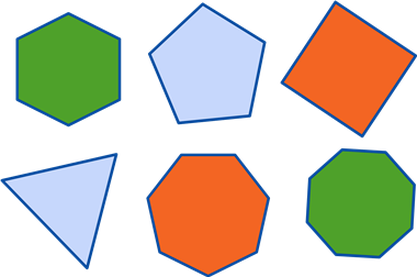
Ek polygon bnane k lie hume minimun 3 sides chahie hoti hai. Unn 3 sides ko end to end connect krke hume ek three-sided polygon miljaaega.
Baccho, aap soch rhe honge ki circle bhi to ek closed figure ha to kya vo bhi ek polygon hai? The answer is NO. Circle kisi straight line segments ko join krke nahi bnta islie vo ek polygon nahi hai. Baccho, polygons 2D geometrical shapes hoti hai.2D ya 2-Dimensional shapes vo hoti hai jinhe hum ek flat ya plain surface p bnaa ske. Before learning about different types of quadrilaterals, let's get to know about a few terms related to polygons.
| TERMS | DEFINITION |
|---|---|
| Sides of a polygon: | The line segments are known as the sides of the polygon. |
| Adjacent sides: | Two points having the same endpoint are called adjacent sides. |
| Vertex: | Vertex is the meeting or intersecting point of a pair of sides. |
| Diagonal: | Diagonal is obtained by joining any two non-adjacent vertices of a polygon. |
ANGLES
Baccho, ab hum angles k baare m pdhenge. Angles tab bnte hai jab ek corner form hota hai. Aap apni daily life m alag alag angles form hote hue dekh skte hai. For example, at the intersection point of a scissor, at the corner of a pizza slice, angles between the hands of a clock, etc.
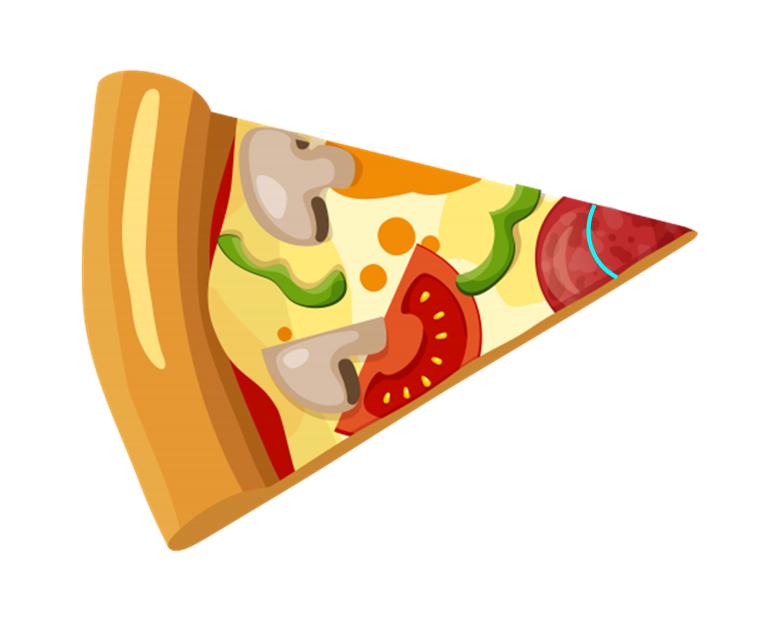
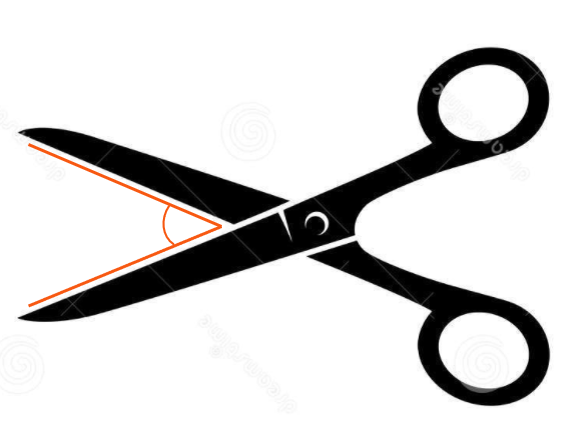
Exterior and interior points to an angle
Baccho, ek angle apne plane ko three different regions m divide krta hai. These regions are :
Baccho, given figure m dekhie.

∠BAC forms the angle in the figure. Points P and Q lie in the interior of the angle (blue shaded region). The points R and S lie on the exterior of the angle.
Example 2
TRIANGLES
Baccho, humne abhi pdha tha ki ek polygon form krne k lie hume minimum 3 sides chahie hoti hai but kya aap bta skte hai ki three sides vale polygon ko kya kaha jaata hai? Yes, you're right! It's called a triangle.
traingle ek three sided polygon hota hai yaani ki it is formed by connecting three line segments end to end. It has three vertices and three interior angles.
Hum apni day to day life m alag alag triangular objects dekhte hai. For example :

Example 3
Draw a rough sketch of a triangle ABC. Mark a point P in its interior and a point Q in its exterior. Is the point A in its exterior or in its interior?

A lies on △ABC
∴ It is neither interior nor exterior.
QUADRILATERALS
Baccho humne abhi pdha ki agar ek polygon three line segments ko end to end connect krke bna hai to vo ek triangle kehlaata hai. But agar hum usme ek aur line segment add krdenge to fir vo konsi shape bn jaaegi? Baccho, iss shape ko quadrilateral kaha jaata hai. "Quadri" means "four" and "lateral" means "connected with sides". Basically, ek aisa polygon jo ki four line segments ko end to end connect krke bna ho aur jiske four vertices and four angles ho, use quadrilateral kaha jaata hai.
Let's see ki hum apni day to day life m quadrilateral figures ko kaha dekhte hai :
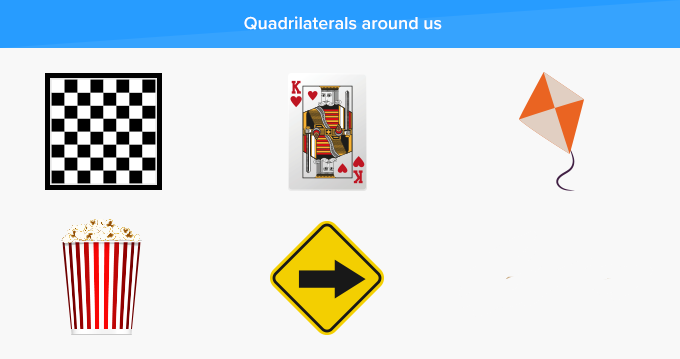
Example 4
Draw a rough sketch of a quadrilateral PQRS. Draw its diagonals. Name them. Is the meeting point of the diagonals in the interior or exterior of the quadrilateral?
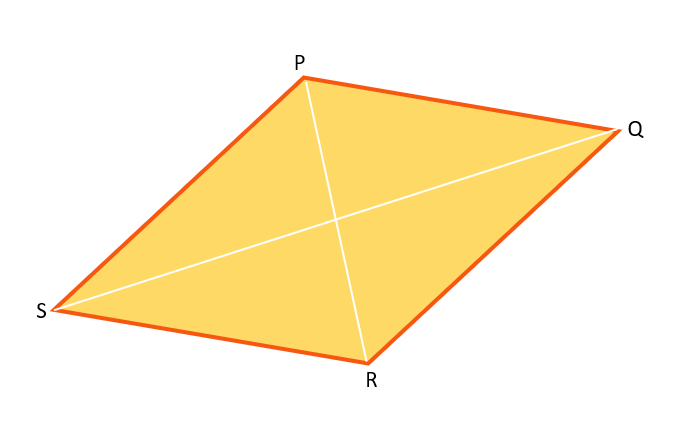
RP and QS are diagonals.
O is in the interior of quadrilateral PQRS.
CIRCLES
Baccho humne iss chapter k starting m pdha tha ki circle is not a polygon kyunki vo line segments ko join krke nahi bnta hai. Ab hum aur detail m pdhenge ki circle kis type ki figure hai and uske kya kya features hote hai. Let's first see ki hum apne environment m kon konse circular objects dekhte hai.

Example 5
Draw any circle and mark
(a) its centre
(b) a radius
(c) a diameter
(d) a sector
(e) a segment
(f) a point in its interior
(g) a point in its exterior
(h) an arc
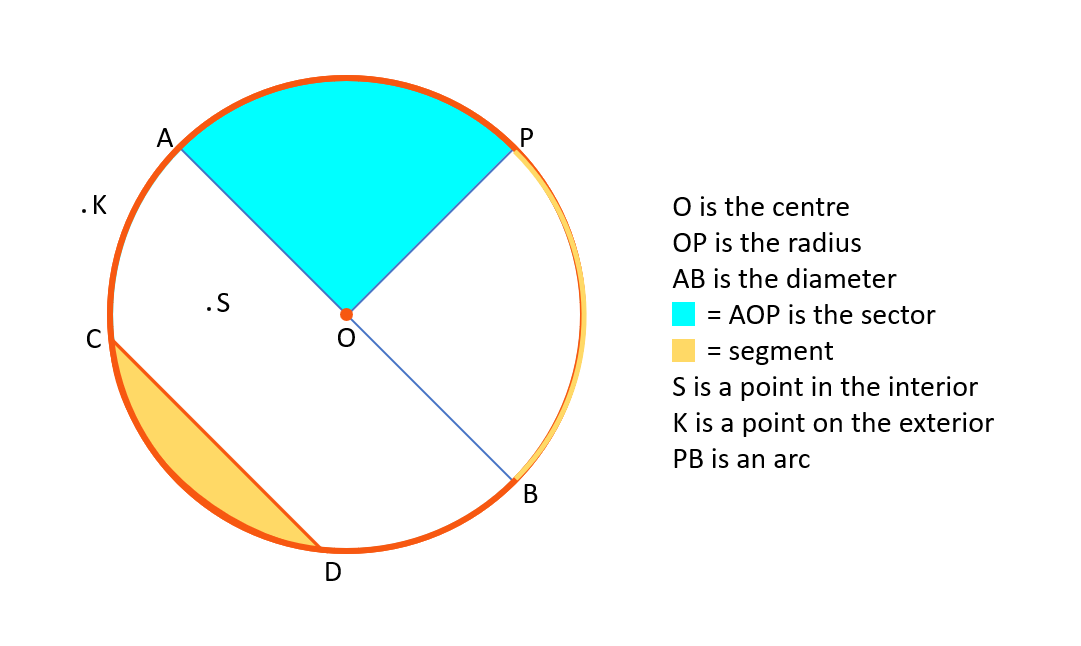
Let's Summarize!
1. A point determines a location. It is usually denoted by a capital letter.
2. A line segment corresponds to the shortest distance between two points. The
line segment joining points A and B is denoted by ¯¯¯¯¯¯AB. ¯¯¯¯¯¯AB and ¯¯¯¯¯¯BA denote the same line segment.
3. A line is obtained when a line segment like ¯¯¯¯¯¯AB is extended on both sides
indefinitely; it is denoted by ¯¯¯¯¯¯AB or sometimes by a single small letter like l.
4. Two distinct lines meeting at a point are called intersecting lines.
5. Two lines in a plane are said to be parallel if they do not meet.
6. A ray is a portion of line starting at a point and going in one direction endlessly.
7. Any drawing (straight or non-straight) done without lifting the pencil may be
called a curve. In this sense, a line is also a curve.
8. A simple curve is one that does not cross itself.
9. A curve is said to be closed if its ends are joined; otherwise it is said to be open.
10. A polygon is a simple closed curve made up of line segments. Here,
(i) The line segments are the sides of the polygon.
(ii) Any two sides with a common end point are adjacent sides.
(iii) The meeting point of a pair of sides is called a vertex.
(iv) The end points of the same side are adjacent vertices.
(v) The join of any two non-adjacent vertices is a diagonal.
11. An angle is made up of two rays starting from a common end point.
Two rays −−→OA and −−→OB make ∠AOB(or also called ∠BOA).
An angle leads to three divisions of a region:
On the angle, the interior of the angle and the exterior of the angle.
12. A triangle is a three-sided polygon.
13. A quadrilateral is a four-sided polygon. (It should be named cyclically).
In any quadrilateral ABCD, ¯¯¯¯¯¯AB and ¯¯¯¯¯¯DC and ¯¯¯¯¯¯AD and ¯¯¯¯¯¯BC are pairs of opposite
sides. ∠A and ∠C and ∠B and ∠D are pairs of opposite angles. ∠A is adjacent
to ∠B and ∠D ; similar relations exist for other three angles.
14. A circle is the path of a point moving at the same distance from a fixed point.
The fixed point is the centre, the fixed distance is the radius and the distance
around the circle is the circumference.
A chord of a circle is a line segment joining any two points on the circle.
A diameter is a chord passing through the centre of the circle.
A sector is the region in the interior of a circle enclosed by an arc on one side and a pair of radii on the other two sides.
A segment of a circle is a region in the interior of the circle enclosed by an arc
and a chord.
The diameter of a circle divides it into two semi-circles.
Let's Revise!
It divides into three different regions : The angle, the interior of the angle and the exterior of the angle.
Ye saare points ek fixed point se equal distance p hote hai. Uss fixed point ko circle ka centre kaha jaata hai.
The fixed distance from the centre of the circle to any point on the boundary of the circle is called its radius.
Circle ki boundary ko circumference kaha jaata hai.
Jab hum circumference k koi bhi do points ko join krte hai, to uss line segment ko chord kaha jaata hai.
A part of the circumference of a circle is called an arc.
A diameter is the chord passing through the centre of the circle. It is the longest chord of the circle and it divides the circle into two semi-circles.
Sector ek circle ka vo region hota hai jo ki ek arc aur do radii se enclosed hota hai. Example of a sector is a pizza slice.
Segment of a circle is the region enclosed by and arc and a chord.

